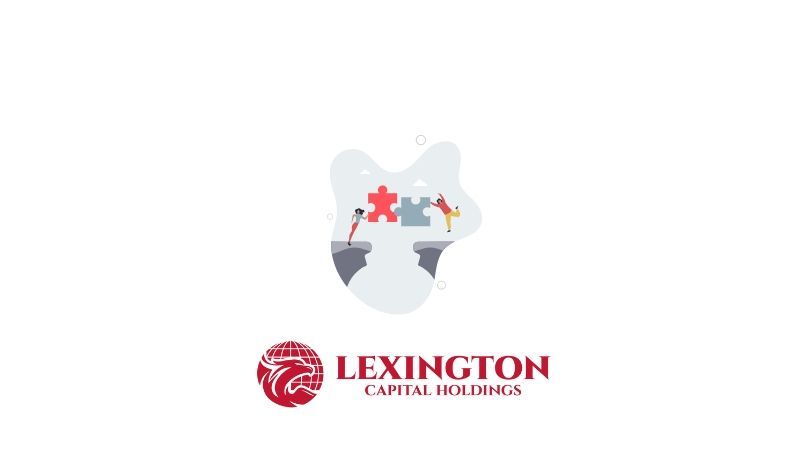When Is It Time to Upgrade? A Guide to Smarter Tech Investments for Your Business
When Is It Time to Upgrade? A Guide to Smarter Tech Investments for Your Business
Outdated tools and systems can quietly hold your business back, creating inefficiencies and limiting growth. Recognizing when to invest in new technology isn’t always straightforward, but it’s essential for staying competitive in a rapidly changing market. Whether it’s streamlining operations, improving customer experiences, or supporting future scalability, smart technology upgrades can transform your business.
This article will walk you through key indicators it’s time to upgrade and strategies to ensure your investment pays off.
When to Invest in Technology
- Operational Bottlenecks Are Slowing You Down If your current systems are causing delays, errors, or inefficiencies, it may be time to upgrade. For example, outdated software might limit your ability to process orders quickly or manage customer relationships effectively.
- Your Competitors Are Outpacing You Falling behind your competition is a red flag. If competitors are leveraging technology to provide faster service, better customer experiences, or lower costs, it’s time to catch up—or risk losing your edge.
- Your Team Is Struggling When employees spend more time troubleshooting than doing their jobs, it affects morale and productivity. Upgrading tools can empower your team to work smarter, not harder.
- Your Customers Demand It Technology should enhance the customer experience. If you’re noticing complaints about slow service, outdated payment methods, or poor communication, it’s a sign to invest in tools that meet modern expectations.
- You’re Ready to Scale Growing businesses need scalable solutions. If your existing systems can’t handle increased demand, it’s time to invest in technology that supports growth.
How to Upgrade Your Business Tools
- Assess Your Needs Start with a technology audit. Identify the gaps in your current tools and determine what’s essential for your business goals. This ensures you invest in tools that truly make an impact.
- Set a Budget Technology investments can range from affordable software subscriptions to significant infrastructure upgrades. Decide what you can realistically spend without jeopardizing other areas of your business.
- Research Solutions Don’t just go with the first option you find. Compare products, read reviews, and consider scalability, customer support, and integration capabilities.
- Plan for Implementation Introducing new tools can disrupt operations if not handled carefully. Develop a rollout plan that includes training for your team and a timeline for transitioning from old systems to new ones.
- Measure ROI Once you’ve implemented the technology, track its performance. Are processes faster? Are customers happier? Regularly evaluate whether the tool is delivering the expected results.
Common Mistakes to Avoid
- Chasing Trends: Invest in technology that aligns with your business needs, not just the latest fad.
- Overcomplicating Systems: Too many tools can overwhelm your team. Focus on solutions that integrate well with your existing systems.
- Neglecting Training: Even the best tools are useless without proper training. Ensure your team understands how to use the new technology effectively.
Final Thoughts
Investing in technology is not a one-time decision—it’s an ongoing process that evolves with your business. By upgrading your tools strategically, you can streamline operations, enhance customer experiences, and position your business for long-term success.
When the time comes to make your next investment, approach it with a clear plan and a focus on ROI. The right tools won’t just support your business—they’ll help it thrive.
Let us know—what’s the next piece of technology you’re considering for your business? Share your thoughts in the comments below!

When you apply for business funding, your application goes through a critical stage—underwriting. This is where lenders evaluate risk and determine whether your business qualifies for financing, and under what terms. Understanding what underwriters look for can help you strengthen your application, avoid delays, and increase your approval odds.

Not every business enjoys a steady stream of income. For many companies—especially those in seasonal industries, contracting, or project-based work—revenue can shift dramatically from month to month. These ups and downs are normal, but they can make managing cash flow, payroll, and operating expenses challenging. At Lexington Capital Holdings, we understand that fluctuating revenue doesn’t mean instability—it just means you need the right financial tools to stay balanced and grow confidently.

The Challenge of Hyper-Growth For many startups, growth isn’t the problem—it’s managing it. Rapid scaling demands capital for hiring, marketing, technology, and operations. But too often, founders find themselves cash-strapped right when they need resources the most. Choosing the right financing strategy can be the difference between sustainable growth and burning out too soon.

When it comes to business financing, the terms you secure are just as important as the funding itself. Lower interest rates, flexible repayment schedules, and higher approval amounts can mean the difference between simply surviving and setting your business up to thrive. The good news? Business owners often have more negotiating power than they realize. At Lexington Capital Holdings, we’ve seen firsthand how preparation and strategy can help secure stronger terms. Here’s how you can do the same:

For many businesses, waiting on customer payments can feel like standing still when you’re ready to move forward. Delayed invoices, extended payment terms, or slow collections create cash flow gaps that make it harder to cover expenses, pay employees, or seize new opportunities. The truth is—even successful, profitable companies face this challenge. The key isn’t avoiding it, but managing it strategically with the right funding solutions

Securing business funding is a milestone—but the real impact comes from how you put that capital to work. Every dollar borrowed should fuel momentum, strengthen operations, and generate measurable returns. Unfortunately, too many businesses stop at “getting approved” and miss the chance to maximize their return on investment (ROI). At Lexington Capital Holdings, we believe funding isn’t just about access to capital—it’s about creating opportunity. Here’s how to ensure your financing delivers the highest ROI:

In today’s fast-paced business environment, standing out from the competition requires more than just great products and services—it takes strategy, timing, and smart financial decisions. One of the most overlooked tools in building and maintaining a competitive advantage is business financing. When leveraged correctly, financing doesn’t just help you “get by”; it can actually position your business to outpace competitors and capture new opportunities.

In business, surprises aren’t a matter of if—they’re a matter of when. Whether it’s a sudden equipment breakdown, an unexpected dip in sales, or a market shift that requires quick adaptation, unforeseen expenses can test even the most successful companies. The difference between thriving and struggling often comes down to how well you’ve prepared.

When most business owners hear the word debt, it sparks feelings of stress or risk. But here’s the truth—debt isn’t always a bad thing. In fact, when managed strategically, debt can become one of the most powerful tools to grow, stabilize, and scale your business. At Lexington Capital Holdings, we work with business owners every day who are navigating this very question: Is taking on debt the right move for me? Let’s break down the difference between “good” and “bad” debt so you can make informed financial decisions.

In today’s business world, financing options are everywhere—but choosing the right path can feel overwhelming. From traditional bank loans to alternative lending solutions, the fine print and fast-changing requirements often leave business owners spending more time deciphering funding terms than actually running their businesses. That’s where the value of a dedicated funding advisor truly shines. At Lexington Capital Holdings, we’ve seen firsthand how personalized guidance can transform the funding experience for business owners of all sizes.

